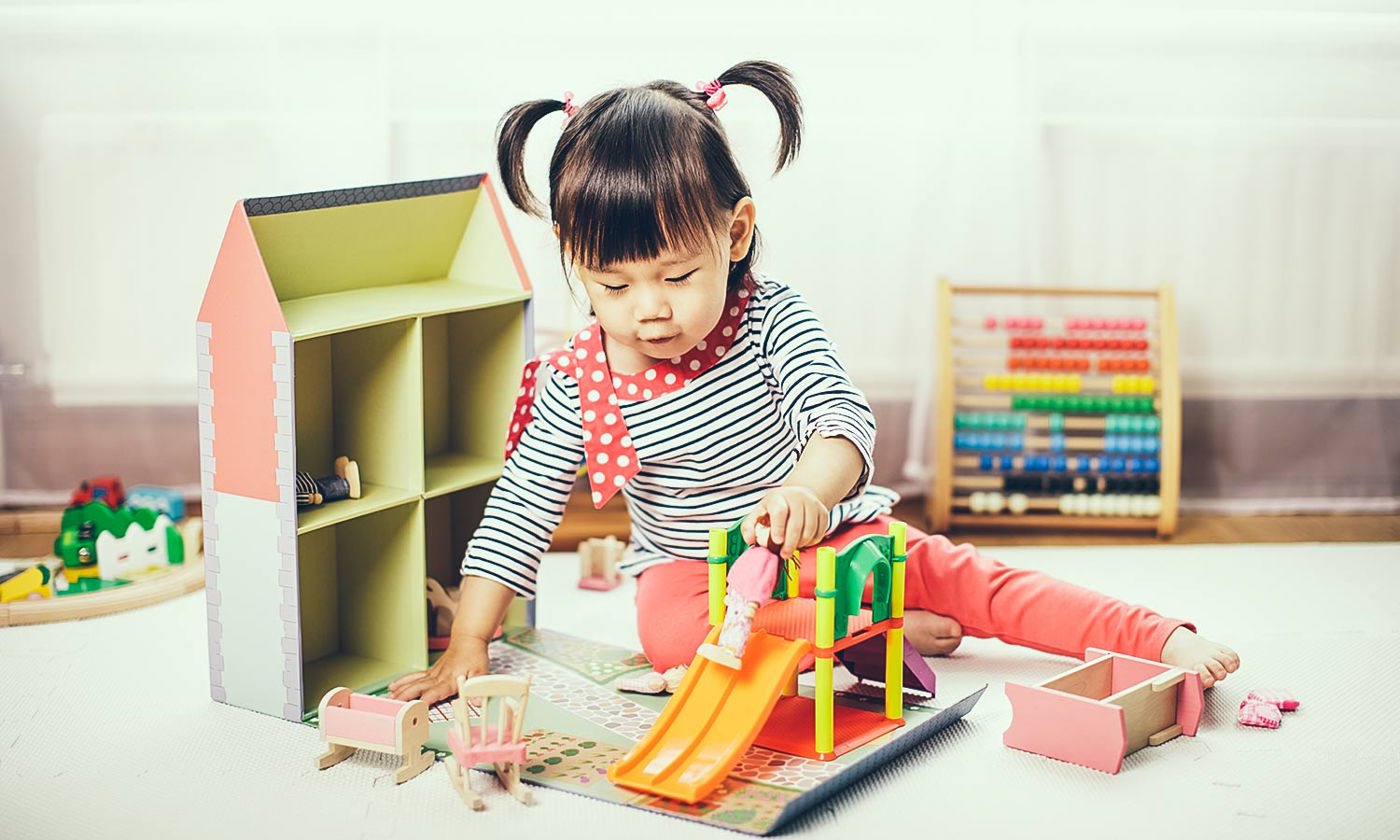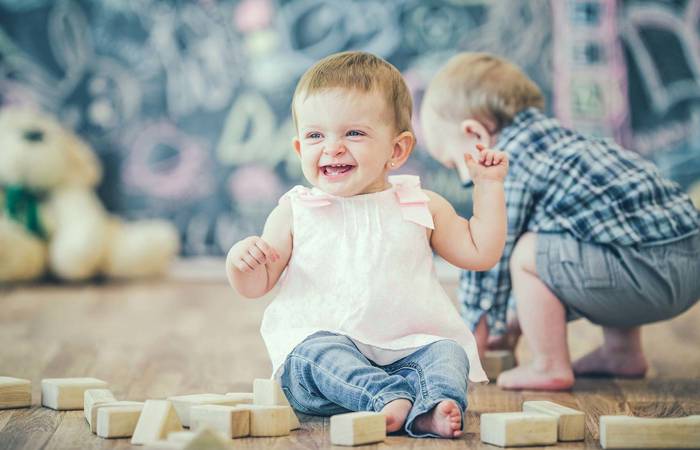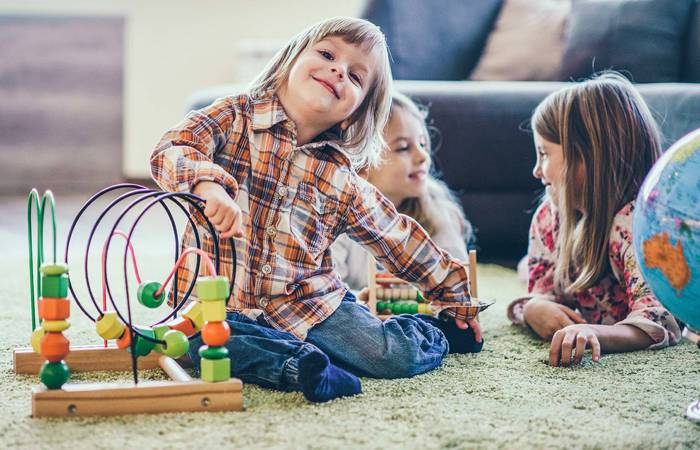Like what you see?
Sign up to receive more free parenting advice.
Thank you for subscribing to our newsletter!
Early Learning

Credit: iStock.com/M-image
Most parents know that play is fantastic for children. It helps them understand the world, develop social skills and learn in myriad ways.
But many parents probably don't know that in times of stress, grief or anger, play therapy allows children to work through emotions and challenges under the care of a qualified therapist.
“Play therapy uses the natural language of children, which is play, to assist them in working through difficulties and to express their thoughts, feelings and emotions by using play,” says Fiona Howell, a play therapist and clinical manager at Sydney’s Be Centre.
Children are not mini adults. They don’t think like adults, and [if asked] they will often give you the answer they think the adults expect. They don’t always have the words to describe what’s happening with them.Fiona Howell
Stay up to date with the latest news and articles from First Five Years
Thank you for subscribing to our newsletter!
How and when can play therapy help a young child?
The options for using play therapy are extensive.
“It can work with almost any childhood difficulty. Play therapy will help with any kind of trauma, anxiety or social difficulties; it helps children with behavioural challenges, autism or ADHD; it even helps children with issues like adjusting to the birth of a new sibling, a divorce or grief and loss,” Fiona says.
Like visiting a child psychologist or seeing an occupational therapist, play therapy isn’t about an “instant fix”: most children come to the centre for an average of 18 sessions. But the results of play therapy are usually solid, in part because it allows children to use their own language.
“Children are not mini adults. They don’t think like adults, and [if asked] they will often give you the answer they think the adults expect. They don’t always have the words to describe what’s happening with them,” says Fiona.
Instead, the natural language of play helps children work through things so they can move forward.
“Letting them bring their fears up through play frees them up and helps them get unstuck,” says Fiona.
Play therapy in Australia
The research behind play therapy is available on the website Evidence-Based Child Therapy. The site’s database aims to include all available play therapy intervention research from 1995 to the present that has been published in, or translated into, English. This allows professionals and parents to have easy access to peer-reviewed research about the field.
Across 90 studies, including 40 randomised-controlled studies, Fiona says play therapy has been shown to bring benefits for children’s social skills, social adjustment, relationships and various disruptive behaviours. The therapy seems to work best for children under eight and when parents or caregivers are willing to be involved.
Despite putting down roots in the US and the UK in the 1950s, play therapy is a relatively young profession in Australia. In fact, there wasn’t even training available for play therapists until around a decade ago.
However, Australian play therapists, who require a post-graduate specialist qualification to practice, can be now supervised locally and can complete their studies at places like Deakin University.
Australian Play Therapists are also required to become a member of a professional association. (Confusingly, there are three to choose from: the Australasia Pacific Play therapy Association, the Australian Play Therapists Association, and Play Therapy Australasia. All require qualifications and supervision as a condition of membership.)
The slow start means that play therapy isn’t yet widely known in Australia. The issue is partly compounded by the fact that many play therapists work within larger organisations like hospitals, welfare organisations or education departments, rather than in private practice.
Where private practitioners do exist, demand for their services is often booming. Sydney’s Be Centre has twelve qualified play therapists on staff, and its waitlist for play therapy rarely falls below about 80 children.
“In our play rooms we have a range of specifically selected items like dress ups, puppets, art and craft, music, clay and sand tray miniatures. Each work on a different area but are all part of our toolkit and the type of things you’ll see replicated in most play therapy rooms,” says Fiona.
But don’t other therapists use play therapy?
Some confusion exists for parents because many experienced therapists use ‘play-based’ techniques to connect with a child to build rapport before engaging with them in a cognitive way.
"In play therapy, we aren’t trying to get children to talk, although they often do! The play is the therapy, as children may not have the words to explain their experiences. For example, a young client of mine whose sibling passed away, played out being with her in the hospital while she was in a coma, using the cushions and blankets in the playroom and the play medical kit to show me what that experience was like. She couldn’t put that experience into words but she could play it out."
What parents and children can expect
Play therapy varies considerably between children.
“Every child is different, and that’s the really important thing to understand. You may see similar themes, but each is an individual. Play therapy really honours that. We accept and honour children the way they are and we work with them from there,” says Fiona.
“There’s a lot of theory that goes into the clinical decision-making as to how we respond or direct the play when needed.”
What is consistent is that a lot of work is invested in the building of the relationship between child and therapist. It’s one reason Fiona recommends parents meet their child’s potential play therapist before the child’s sessions begin.
“If you as a parent feel comfortable then it’s more likely you’ll be supportive of the therapy,” she says.
This is vital because although some parents want to be involved, and the play therapist may offer resources that can help at home, the bulk of the work is done with the therapist while parents are out of the room.
“It’s a relationship of trust where a child feels safe to be themselves. It’s the therapist’s job to build that trust with the child. If they can do that then we start to see children be able to successfully work through the challenges that brought them to play therapy,” Fiona says.







